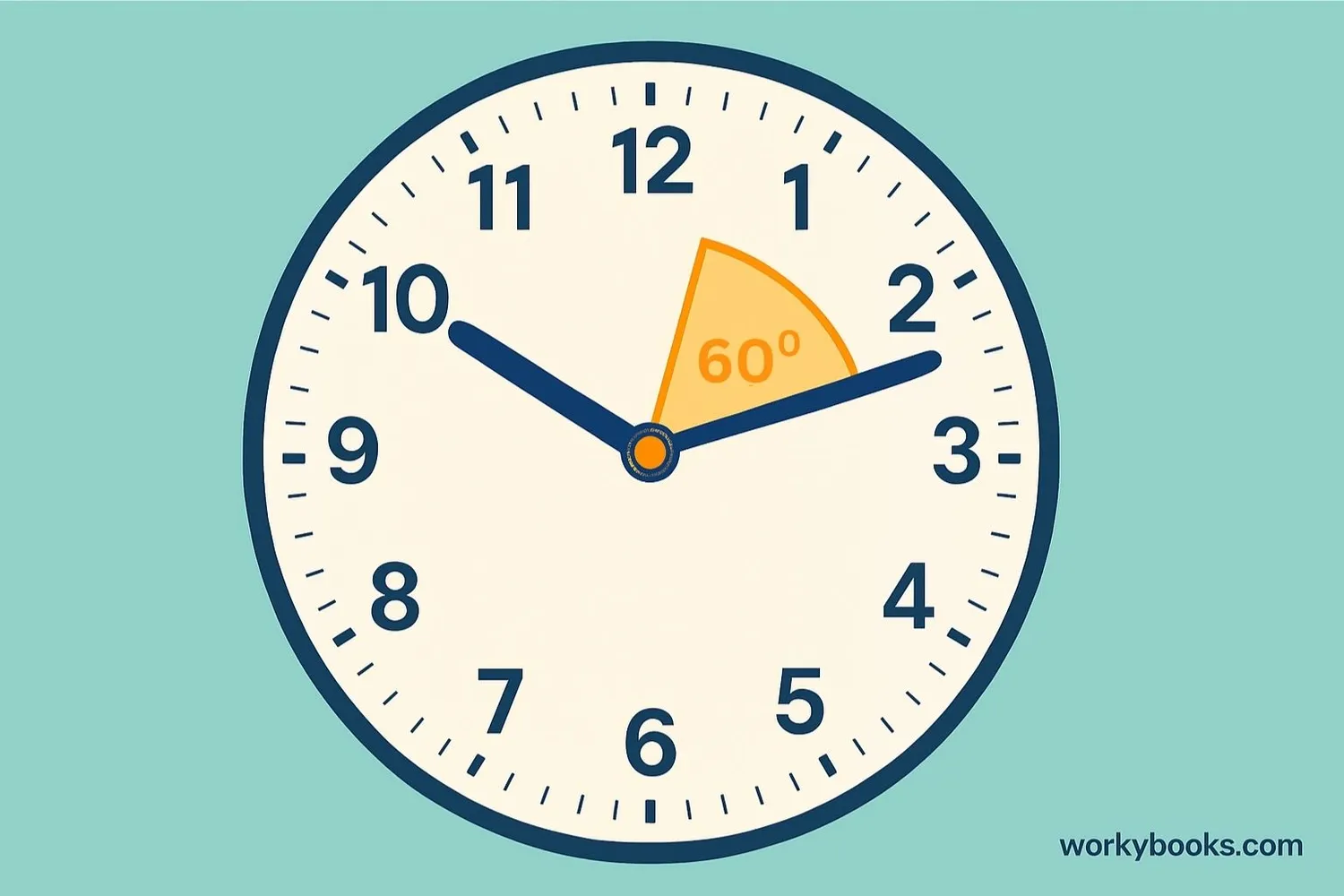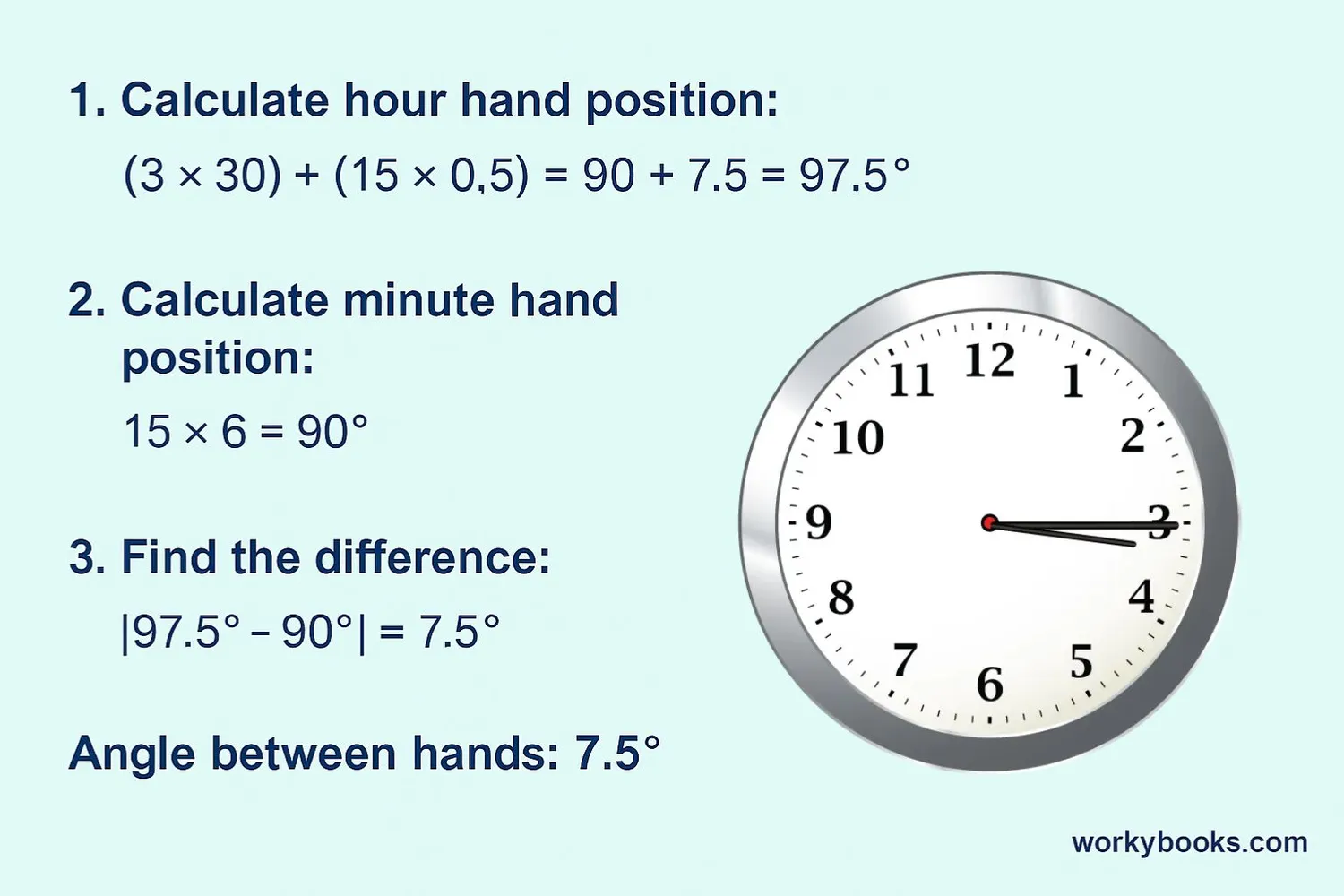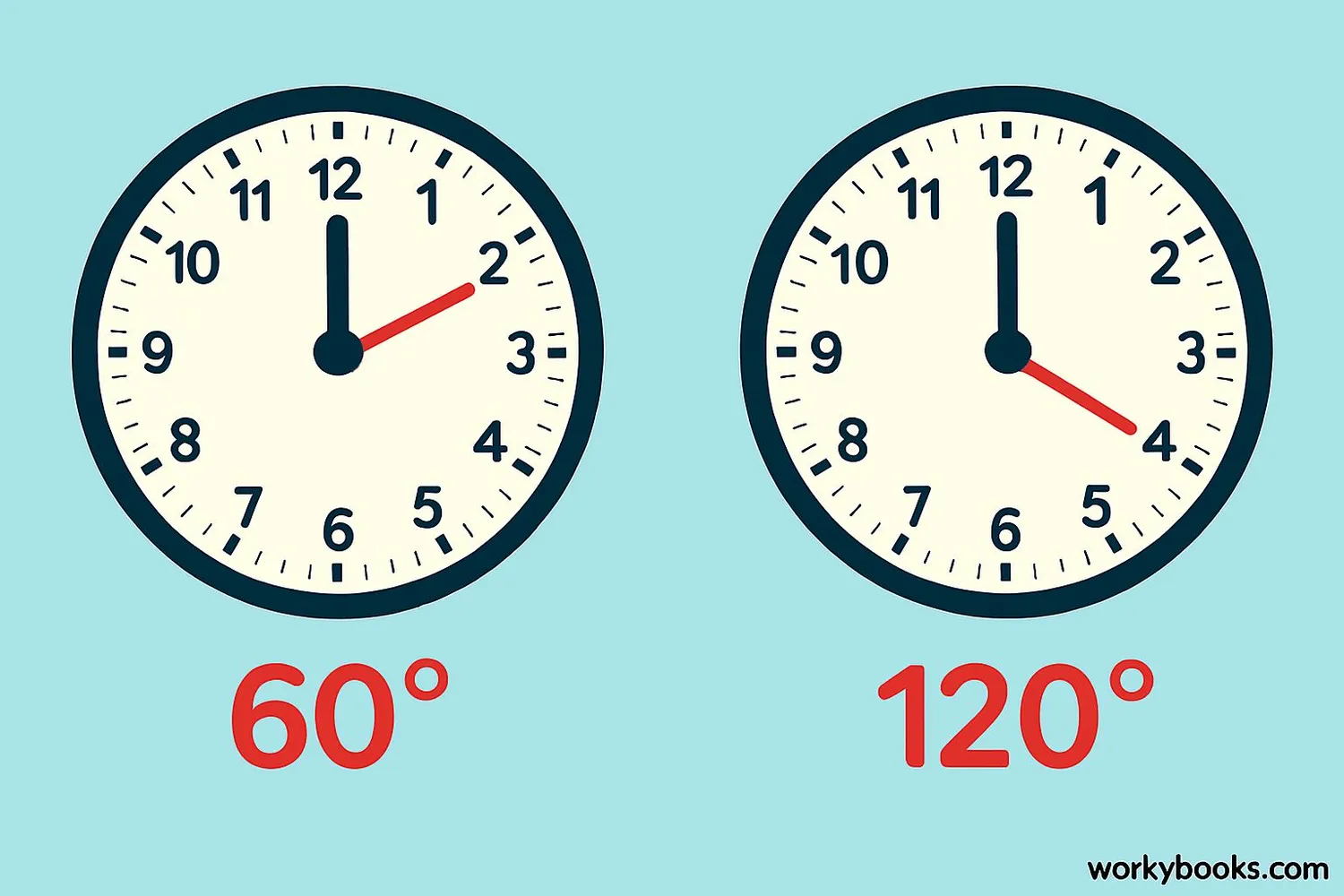Clock Angle Formula - Definition, Examples, Quiz, FAQ, Trivia
Learn to calculate angles between clock hands with simple formulas and practice activities
What is the Clock Angle Formula?

The clock angle formula helps us calculate the angle between the hour and minute hands on a clock. Since a clock is a circle, it has 360 degrees. The clock is divided into 12 hours, so each hour represents 30 degrees (360 ÷ 12 = 30).
The minute hand moves 6 degrees every minute (360 degrees ÷ 60 minutes = 6° per minute). The hour hand moves 0.5 degrees every minute (30 degrees per hour ÷ 60 minutes = 0.5° per minute).
Understanding this formula helps us solve problems about time and angles, which is useful in math and everyday life.
Key Concept
A full circle has 360 degrees. Each hour on the clock represents 30 degrees (360 ÷ 12). Each minute represents 6 degrees for the minute hand and 0.5 degrees for the hour hand.
How to Calculate Clock Angles

Follow these steps to calculate the angle between clock hands:
Clock Angle Formula
Where H is hours and M is minutes
1. Calculate the hour hand position: (H × 30) + (M × 0.5)
2. Calculate the minute hand position: M × 6
3. Find the difference between these two positions
4. Take the smaller angle between the result and 360 minus the result
Example: Calculate the angle at 3:00
- Hour hand: 3 × 30 = 90°
- Minute hand: 0 × 6 = 0°
- Difference: |90° - 0°| = 90°
- The angle is 90° (which is also the smaller angle)
Remember
Always take the smaller angle between the hands. The maximum possible angle is 180° since the clock is a circle.
Clock Angle Examples

Let's practice with some examples:
Hour hand: (2 × 30) + (30 × 0.5) = 60 + 15 = 75°
Minute hand: 30 × 6 = 180°
Difference: |75° - 180°| = 105°
Hour hand: (7 × 30) + (20 × 0.5) = 210 + 10 = 220°
Minute hand: 20 × 6 = 120°
Difference: |220° - 120°| = 100°
Hour hand: (10 × 30) + (10 × 0.5) = 300 + 5 = 305°
Minute hand: 10 × 6 = 60°
Difference: |305° - 60°| = 245° → 360 - 245 = 115° (smaller angle)
Practice Tip
Try calculating angles for different times throughout the day. Start with whole hours, then half hours, then quarter hours.
Clock Angle Quiz
Test your understanding with this 5-question quiz. Choose the correct angle for each time.
Frequently Asked Questions
Here are answers to common questions about clock angles:
Clock Trivia
Discover interesting facts about clocks and time measurement:
Ancient Timekeeping
The earliest known timekeeping devices were sundials, used in ancient Egypt around 3500 BCE. Water clocks and hourglasses were later developed for measuring time at night or indoors.
Atomic Clocks
The most accurate clocks today are atomic clocks, which lose only one second every 100 million years. They measure the vibrations of atoms to keep precise time.
Clock Angle Problems
Clock angle problems have been part of mathematics education for centuries. They help students understand angles, fractions, and proportional reasoning.
World's Oldest Clock
The world's oldest working clock is in Salisbury Cathedral, England, dating back to 1386. It has no face but strikes the hours.





